Summer is usually a long-awaited time in Canada, filled with sunny days, blue skies and warm temperatures. However, this season also marks the appearance of some not-so-welcome pests and insects. With the milder winter and climate change, pests have survived overwintering, growing their populations into the summer months. Summer is also the season where pests are finding their mates which, in turn, grows their populations. So, which pests do we believe will trend upward? And how will that impact Canadian homes and commercial spaces? Below, we’ve outlined our predictions for the top 10 bugs and pests that will be trending this summer.
Why pest populations may be on the rise this summer in Canada
The main reason for climbing pest populations is the milder winter we’ve seen across Canada. El Niño and climate change have affected this past winter, creating a very mild season for most of Canada, with many provinces seeing unseasonably warm weather even during the historically coldest of months. With that in mind, many of the overwinter pests have survived the season, resulting in a larger pool of pests to repopulate. Alice Sinia, one of Orkin’s entomologists, says that winter provides natural pest control. “When winters are very cold and you have a lot of snow, it tends to make it more difficult for pests to survive. When spring arrives, you’re going to have a smaller population to start the next generation of pests.”
However, this year it seems the opposite is true. “If we have a mild winter, like the one we just experienced, there are fewer freezing days,” continues Alice. “So, most of these insects are going to survive, and it increases their overwintering survival. Having a larger residual population is going to carry throughout the summer and into the fall, and the implication for that means we’re going to have a very heavy season for pests.” In addition to this, the mild weather is also staying longer throughout the year, with summer temperatures extending into the fall season, which also changes pest activity and behaviours.
These mild temperatures are causing overwinter pests and insects to wake up or come out of structures much earlier than usual. Take cluster flies, for example. Typically seen during spring, cluster flies have woken up during the winter season, months earlier than expected. And we’ve seen this with a variety of other overwinter insects, including brown marmorated stink bugs,
*Note: These are Orkin Canada’s current predictions about the expected wave of pest activity for the 2024 summer season. These predictions and trends are anecdotal/based on expected conditions.
Top 2024 Summer Pests
- Bed Bugs
- European Firebugs
- Earwigs
- Tuxedo Bugs & Elm Seed Bugs
- Ticks
- European Fire Ants
- Red Legged Ham Beetles
- Midges
- Wasps
- Lady Bugs
Bed Bugs
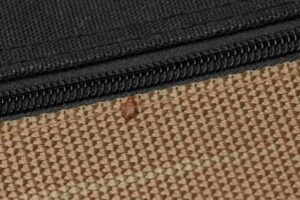
Why are bed bugs bad this summer?
Canadian travel and tourism has rebounded, growing every year following the COVID-19 pandemic. With more people travelling abroad and the Summer Olympics being hosted in Paris this year, the risk of bed bugs is surely set to increase. Even here at home, our list of Canada’s Top 25 Bed Bug Cities illustrates that bed bug rates are also very high in many of our own cities and towns. Summer is often the time for many social events, barbecues and large events where people congregate – which tend to be where bed bugs can be found.
Bed bugs are a blood-feeding insect and their bites can not only be irritating, but also lead to secondary infections. Because they are nocturnal insects, they feed on human blood at night, which can disrupt sleep and impact mental, emotional and psychological health. They can also breed exceptionally quickly, increasing from a few to a few hundred in a matter of several weeks.
Learn how to identify and keep bed bugs away this summer.
European Firebugs
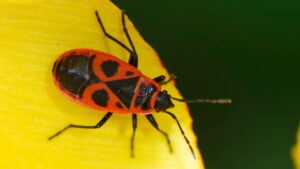
Why are European firebugs bad this summer?
Similar in appearance to the boxelder bug, the European firebug has been trending upwards for the past couple of years, continuing to expand across Canada. They choose warm spots to overwinter, and tend to congregate in large quantities, resulting in more sightings when they emerge.
European firebugs don’t transmit any pathogens or cause damage to homes or structures, but they can be a real nuisance. The sheer number of them can give people a scare. They also can emit a pheromone that attracts other firebugs, causing a bigger infestation.
Here are some tips to prevent European firebugs this summer.
Earwigs
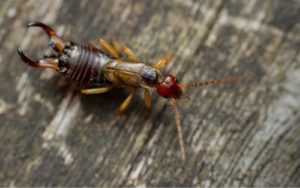
Why are earwigs so bad this summer?
The mild winter made it easier for eggs and adult earwigs to survive. Along with the moisture and humid conditions in summer, there’s more decaying organic matter that earwigs love to feed on.
Earwigs can be a real pest indoors and outdoors. They feed on plants and vegetation, which can potentially damage crops or gardens. When it’s hot and dry, earwigs tend to seek shelter inside, including houses, sheds and garages.
Here’s how to get rid of earwigs this summer.
Tuxedo Bugs & Elm Seed Bugs
Why are tuxedo bugs and elm seed bugs so bad this summer?
Tuxedo bugs and elm seed bugs are two more invasive species to Canada that are growing in population. They overwinter as adults and lay eggs in the early spring. First noticed in 2016 in British Columbia, these bugs look very similar and often are seen together.
Tuxedo bugs and elm seed bugs are not harmful and do not bite people. However, because they exhibit massive migration, they can be a nuisance when they enter into homes and structures. This is because they tend to enter indoors during both the winter and summer months. And like European firebugs, they tend to congregate in large numbers and move together in large groups.
Ticks
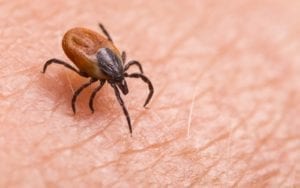
Why are ticks so bad this summer?
Due to the milder winter, more ticks have survived, which has increased the population. Ticks are expanding in all areas across Canada, even in the northern provinces and in the Prairies. Deer ticks or black-legged ticks are becoming more and more prevalent.
With the increase of wildlife also surviving through the past winter, ticks have more of a food source to attach themselves to. When these animals move, so does the area for ticks.
Ticks carry bacteria and viruses that can cause serious illness in people and pets. Black-legged ticks can also carry Lyme Disease, which can cause a variety of serious symptoms including fatigue, loss of muscle function and impacts to the central nervous system.
Learn how to identify and how to prevent black-legged ticks this summer. From habitat to removal, here is everything you need to know about ticks.
European Fire Ants
Why are European fire ants so bad this summer?
Not to be confused with the European firebug, the European fire ant is an invasive species and has continued to be a concern over the last two years. First seen in the 1970s in Newfoundland, European fire ants have seen a dramatic rise in British Columbia, especially in the lower mainland, Fraser Valley and southern Vancouver Island, as well as other provinces across Canada.
European fire ants are not afraid to challenge people and have an extremely painful sting that can leave the area feeling irritated and can form pustules which can become infected if scratched. These stings may cause some people to have an allergic reaction, leading to more severe symptoms.
The biggest concern with European fire ants is their effect on city and private properties. European fire ant colonies can override outdoor spaces, making it impossible for people to use and enjoy them. Their colonies can range from 50,000 with a single queen to up to 300,000 ants with multiple queens. The damage from European fire ants has the potential to cost provinces millions of dollars in repairs to parks, schools, homes and other green spaces.
Learn about fire ants, their habitat and behaviour, and how to prevent fire ants this summer.
Red-Legged Ham Beetle
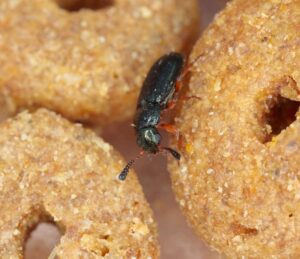
Why are red-legged ham beetles so bad this summer?
The red-legged ham beetle is a stored product insect pest. It usually feeds on animal protein, which can include anything from powdered milk to dog food. Last year, it posed a significant threat to the pet food industry across Canada. Warehouses and distribution centres were beginning to see more of these insects, but now they are also making their way into homes. With more Canadians having pets in their homes and purchasing packaged animal food (especially dog food), the population of the red-legged ham beetle is on the rise.
The behaviour and biology of the red-legged ham beetle is quite unique. The larva will burrow into the paper packing, which makes it hard to spot and, if ingested by a dog or pet, it can lead to gastrointestinal issues – which isn’t good news for the pet or the pet owner.
Midges
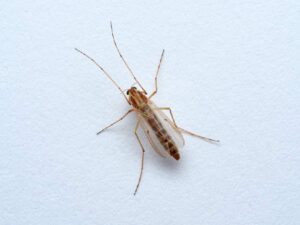
Why are midges so bad this summer?
Midges are back on our list this year—and for good reason. The milder winter, rain and large pools of water have made any soggy, oversaturated soil or puddles the perfect breeding area for midges. Most of the midges from last year have survived, which means an even larger population this summer. Midges feed on plants, hatch in water and come out with the sunlight – meaning the summer months are a prime time for these pests.
Wasps
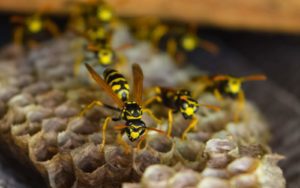
Why are wasps so bad this summer?
Because most of the overwintering queens survived the winter, and thanks to the milder temperatures, wasps have come out early—which has started their populations earlier and has expanded their numbers. The warmer weather has allowed plants and flowers to sprout and grow earlier, making for a plentiful food source. This will result in wasps being present not only in the summer, but into the fall as well.
Wasps can be territorial and aggressive, and have a painful sting. Unlike bees, wasps can sting multiple times, causing redness, swelling and sometimes allergic reactions.
Here are some facts and prevention tips for keeping wasps away this summer.
Ladybugs
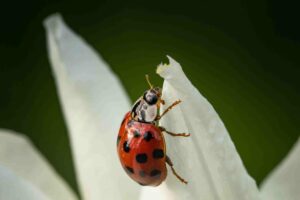
Why are ladybugs so bad this summer?
We shouldn’t rule out ladybugs this year as a trending pest. These beetles can be a problem for homeowners as they move inside structures to overwinter and then move outdoors as the warmer temperatures begin. Due to the mild winter, many of these pests have survived, creating a larger population that will then create the next generation. During the late summer and fall, ladybugs tend to gather on houses for warmth and can easily make their way indoors.
Homeowners and businesses need to be more aware of the implications of climate change
Now that we’re seeing milder winters, more pests are surviving through multiple seasons, which is causing heavy pest seasons. “Homeowners and the public in general really have to understand that this climate change is affecting the behaviour or dispersed activity,” continues Sinia. She reminds us that it’s important to take precautions because insects are staying around even as seasons change, and to consider pest treatments to help keep pests under control. “Pest behaviour is adjusting, so it’s important for people to adjust with it,” she concludes.
If you’re noticing any kind of pest infestation, your local Orkin Pro can help. Contact us today.

You may also like
Canada's Top 25 Bed Bug Cities Of 2023
Bed bugs are extremely efficient hitch hikers. They can move easily across a room and climb onto luggage or anything left on a bed in just one night. Learn which cities have made Canada’s top 25 bed buggiest cities.
British Columbia's Top 20 'Rattiest' Cities 2023
As winter approaches, pest control leader Orkin Canada reminds homeowners and business owners to take precautions to help keep rodents out. Cities are ranked by the number of rodent (rat & mice) treatments the company performed from August 1, 2021 through July 31, 2022.
Ontario's Top 25 "Rattiest" Cities 2023
Pest control leader Orkin Canada reminds home owners and business owners to take precautions to help keep rodents out. Cities are ranked by the number of rodent (rat & mice) treatments the company performed from August 1, 2022 through July 31, 2023. This ranking includes both residential and commercial treatments.
Eastern Canada's Top 15 'Rattiest' Cities 2023
As winter approaches, pest control leader Orkin Canada reminds homeowners and business owners to take precautions to help keep rodents out. Cities are ranked by the number of rodent (rat & mice) treatments the company performed from August 1, 2021 through July 31, 2022.
Remove pests from your home, and stop them from coming back
We work hard to listen, understand and assess your unique situation. Request a free, no-obligation estimate today for a customized pest program that fits your needs.
Request a Free Home EstimateRequest a Free Business Consultation

